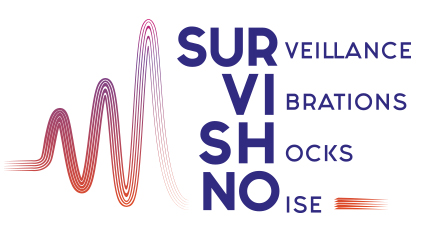Important Updates and Deadlines
- Wifi connection at ISAE-Supaero: please find the instructions here.
- Stay up-to-date and make the most of your conference experience by accessing the congress program, pratical informations and real time notifications through a smartphone application.
Download the "Eventool" app on your Android or Apple device and search for "RESONANCE CONFERENCE 2023".
We are excited to connect with you through the app!
- Check out the final program of the conference here!
- The Technical Exhibition page has just been updated. Check it out here.
- Registration deadline EXTENDED: June, 23th (00:00 at UTC+2).
No further extension will be considered!
- Survishno Contest: click here for more information!
Conference Goal
We are pleased to organize the RESONANCE Conference in Toulouse, France, from July 10th to 13th 2023. This conference aims bringing together researchers, scientists and industry professionals to provide a forum with the most recent advances in the fields of structure vibrations, structural health monitoring, and acoustics and the opportunity for interacting in a collegial atmosphere.

The RESONANCE Conference aims at gathering the following subevents together at the same time and place:
- SURVISHNO (SURVeillance, VIbration, SHocks and NOise)
- JISFA (Industry Days of the French Acoustical Society)
- JJCAB (Young Researchers in Acoustics, Vibration and Noise)
- RESONANCE SUMMER CAMP (Research on Nonlinear Vibration Control Enhancement)
- TECHNICAL EXHIBITION
SURVISHNO
 |
SURVISHNO is a joint organization of the conferences Surveillance, VISHNO (Vibration Shocks and Noise) and EVA (Experimental Vibration Analysis). Participation: More details: here |
JISFA
 |
JISFA is a Industrial Day from the French Society of Acoustics. More details: here |
JJCAB
| JJCAB |
JJCAB is an scientific day organized by the PhDs for the PhDs students. Important dates: More details: here |
Resonance Summer Camp
 |
Resonance Summer Camp aims at gathering PhD researchers to develop collaborative scientific projects in the field on Nonlinear Dynamics. Important dates: More details: here |
Technical Exhibition
| Technical Exhibition |
Technical Exhibition displays the most recent technologies, products and software for application in acoustic and vibration domain, provided by the companies and corporate groups. |
Conference location
The conference will be held in the amphitheaters at the "Maison de Formation Jacqueline Auriol" (MFJA) and at the ISAE-SUPAERO, Toulouse, France.
Registration fees
|
500 Euros |
|
600 Euros |
|
100 Euros |
The Conference registration fee includes:
- Participation in all oral sessions
- Entrance to the exhibition/poster session area
- Access to full conference abstracts proceedings
- Refreshment breaks
- Tickets for the midday meals
- One ticket for the reception dinner
- One ticket for the gala dinner

